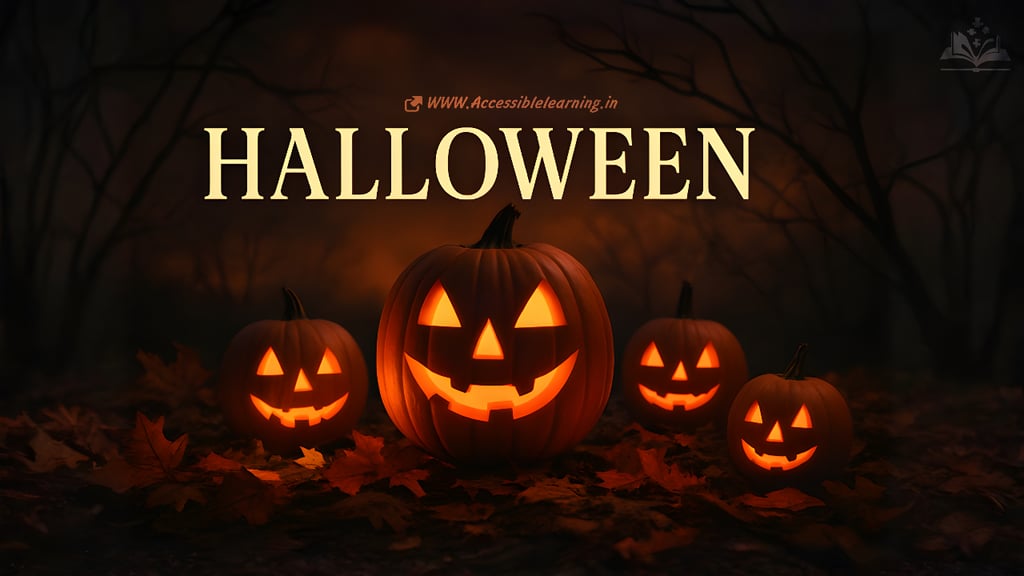
Halloween: The Ultimate Guide to America's Spookiest Holiday
Discover Halloween's complete history, traditions, and modern celebrations. From ancient Samhain to trick-or-treating, explore America's spookiest holiday with expert insights and practical tips.
EVENT/SPECIALSTORY/ENTERTAINMENTCELEBRATION/FESTIVALS
Kim Shin
10/21/20256 min read


What is Halloween and Why Do We Celebrate It?
Halloween, celebrated annually on October 31st, represents one of the most culturally significant and economically impactful holidays in the United States and many other countries worldwide. This ancient celebration combines historical traditions with modern commercial festivities, creating a unique cultural phenomenon that generates billions in economic activity while preserving centuries-old customs.
The modern Halloween celebration blends Celtic spiritual traditions, Christian religious observances, and contemporary consumer culture into a distinctive holiday experience. Understanding Halloween's significance requires exploring its deep historical roots, cultural evolution, and current impact on communities worldwide.
The Ancient Origins of Halloween: From Samhain to All Hallows' Eve
Celtic Samhain: The Foundation of Halloween
Halloween traces its origins to the ancient Celtic festival of Samhain (pronounced "sow-in"), celebrated approximately 2,000 years ago by the Celts who inhabited regions of Ireland, the United Kingdom, and northern France. Samhain marked the end of the harvest season and the beginning of winter, representing a transition period when the boundary between the living and dead became permeable.
The Celts believed that on October 31st, ghosts returned to earth, causing trouble and damaging crops. Celtic priests, known as Druids, built sacred bonfires where people gathered to burn crops and animals as sacrifices to Celtic deities. During these celebrations, Celts wore costumes consisting of animal heads and skins, attempting to tell each other's fortunes.
Roman Influence and Christian Adaptation
When the Roman Empire conquered Celtic territories, two Roman festivals merged with Samhain. Feralia commemorated the passing of the dead, while another festival honored Pomona, the Roman goddess of fruit and trees. This connection explains the modern Halloween tradition of "bobbing for apples."
Christian influence fundamentally transformed the celebration. In 43 A.D., Pope Boniface IV established All Saints' Day on May 13th, later moved to November 1st by Pope Gregory III. The evening before became known as All Hallows' Eve, eventually shortened to Halloween. All Souls' Day followed on November 2nd, creating a three-day observance called Hallowmas.
How Did Halloween Come to America?
Colonial Restrictions and Regional Variations
Halloween's arrival in America proved complex due to rigid Protestant belief systems in New England colonies that strictly forbade Halloween celebrations. However, southern colonies and Maryland demonstrated more acceptance of Halloween festivities, particularly among diverse immigrant populations.
The Irish Potato Famine of the 1840s brought millions of Irish immigrants to America, significantly popularizing Halloween celebrations nationwide. These immigrants brought traditional Halloween customs, including the carving of jack-o'-lanterns, originally made from turnips and potatoes in Ireland.
American Innovation and Cultural Integration
Americans began developing uniquely American Halloween traditions during the late 19th century. The focus shifted from frightening supernatural elements toward community-based activities, neighbor gatherings, and seasonal celebrations. This transformation reflected American values of community building and cultural assimilation.
Halloween Traditions Explained: Understanding Popular Customs
Trick-or-Treating: Evolution of an American Tradition
Trick-or-treating evolved from several historical practices. Medieval "souling" involved poor people visiting wealthy households requesting food in exchange for prayers for deceased family members. Irish and Scottish immigrants brought "guising," where children dressed in costumes performed tricks, songs, or jokes in exchange for treats.
The modern trick-or-treating tradition emerged during the 1920s and 1930s, temporarily interrupted by World War II sugar rationing. The practice exploded in popularity during the 1950s baby boom, becoming a cornerstone of American childhood experiences.
Jack-o'-Lantern Origins and Significance
Jack-o'-lanterns originated from an Irish legend about "Stingy Jack," a mythical figure who trapped the Devil and was condemned to wander between heaven and hell with only a burning coal inside a carved turnip for light. Irish immigrants brought this tradition to America, discovering that pumpkins, native to North America, made excellent jack-o'-lanterns.
The carved pumpkin serves multiple symbolic purposes: warding off evil spirits, celebrating harvest abundance, and creating atmospheric decorations that signal Halloween participation to trick-or-treaters.
Halloween Costumes: From Spiritual Protection to Creative Expression
Historical Halloween costumes served protective functions, disguising wearers from malevolent spirits during Samhain. Modern costume traditions reflect cultural trends, popular entertainment, current events, and personal creativity.
Contemporary costume categories include traditional scary themes (ghosts, witches, monsters), pop culture references (movie characters, celebrities, viral internet phenomena), and creative interpretations of abstract concepts. The costume industry has evolved into a sophisticated market serving diverse demographic preferences and budget considerations.

Modern Halloween Statistics and Economic Impact
Consumer Spending Patterns
Halloween represents the second-largest commercial holiday in the United States, generating substantial economic activity across multiple industries. Consumer spending typically encompasses costumes, decorations, candy, greeting cards, and entertainment experiences.
Recent industry analysis indicates that average household Halloween spending has increased consistently, reflecting the holiday's growing cultural importance and expanded celebration duration. Spending categories include adult costumes, children's costumes, pet costumes, home decorations, and specialty food items.
Demographic Participation Trends
Halloween participation spans all age demographics, with particularly strong engagement among households with children, young adults, and millennials. Participation rates have increased steadily, indicating Halloween's growing cultural acceptance and mainstream appeal.
Regional participation varies, with higher engagement in suburban areas compared to urban centers, though urban Halloween celebrations often feature elaborate community events, themed parties, and commercial attractions.
Halloween Safety Guidelines for Families
Trick-or-Treating Safety Essentials
Successful trick-or-treating requires careful planning and safety awareness. Essential safety considerations include visibility enhancement through reflective materials, appropriate supervision based on children's ages, established neighborhood boundaries, and communication protocols.
Costume safety involves selecting flame-resistant materials, ensuring proper fit to prevent tripping, choosing comfortable footwear, and incorporating visibility elements for evening activities. Parents should inspect all collected candy before consumption, removing homemade items and checking commercial packages for tampering.
Home Safety for Halloween Hosts
Households participating in Halloween celebrations should prioritize visitor safety through adequate lighting, clear walkways, secure decorations, and appropriate crowd management. Property preparation includes removing tripping hazards, securing loose decorations, providing sufficient illumination, and maintaining clear access to entrances.
Cultural Impact and Global Halloween Celebrations
International Halloween Adoption
Halloween celebrations have expanded globally, adapting to local cultural contexts while maintaining core traditional elements. Countries including Canada, the United Kingdom, Australia, and parts of Europe have embraced Halloween with varying degrees of enthusiasm and cultural integration.
Each region develops unique Halloween characteristics reflecting local preferences, available resources, and cultural sensitivities. This global expansion demonstrates Halloween's adaptability and universal appeal across diverse cultural contexts.
Halloween in Popular Culture
Halloween's influence extends throughout popular culture, inspiring literature, films, television programming, music, and digital entertainment. The horror genre experiences peak popularity during Halloween season, while themed entertainment venues, haunted attractions, and seasonal events generate significant tourism revenue.
Social media platforms amplify Halloween celebrations through costume contests, decoration showcases, and community event promotion, creating virtual Halloween experiences that complement physical celebrations.
Halloween Party Planning and Entertainment Ideas
Creating Memorable Halloween Experiences
Successful Halloween parties require thoughtful planning, creative themes, and engaging activities suitable for intended audiences. Party planning considerations include guest demographics, venue selection, decoration themes, entertainment options, and refreshment planning.
Effective Halloween themes might include classic horror movies, decade-based celebrations, character-specific parties, or creative interpretations of seasonal elements. Activities should accommodate various comfort levels with scary content while maintaining festive atmospheres.
Halloween Food and Beverage Ideas
Halloween entertaining benefits from themed food presentations that balance creativity with practical preparation. Popular approaches include redesigning familiar foods with Halloween aesthetics, creating themed beverages, and incorporating seasonal ingredients like pumpkins, apples, and warming spices.
Successful Halloween refreshments consider dietary restrictions, age-appropriate options, and visual appeal while maintaining food safety standards during extended party durations.
Environmental Considerations for Sustainable Halloween
Eco-Friendly Halloween Practices
Growing environmental awareness has prompted interest in sustainable Halloween celebrations that minimize waste and environmental impact. Sustainable practices include reusing decorations, choosing biodegradable materials, supporting local producers, and implementing creative recycling approaches.
Costume sustainability involves selecting quality items for multiple uses, participating in costume swaps, choosing natural materials when possible, and properly disposing of synthetic materials after use.
Reducing Halloween Waste
Traditional Halloween celebrations can generate significant waste through single-use decorations, excessive packaging, and disposable costume elements. Waste reduction strategies include planning decoration reuse, selecting minimal packaging options, composting organic materials, and participating in community recycling programs.
The Future of Halloween Celebrations
Emerging Halloween Trends
Contemporary Halloween trends reflect technological integration, social media influence, and evolving cultural preferences. Emerging trends include augmented reality experiences, virtual celebration options, sophisticated home automation for decorative displays, and increased adult participation in Halloween activities.
Technology integration enables enhanced costume experiences, interactive decorations, and digital trick-or-treating alternatives that complement traditional celebrations while addressing modern lifestyle considerations.
Halloween's Continuing Evolution
Halloween's future development will likely reflect broader cultural shifts, technological advancement, and changing social dynamics. The holiday's demonstrated adaptability suggests continued growth and evolution while maintaining core traditional elements that provide cultural continuity.
Understanding Halloween's comprehensive history, traditions, and modern significance provides insight into this uniquely American holiday that has achieved global recognition and continues evolving with contemporary cultural trends.
Subscribe to our newsletter
All © Copyright reserved by Accessible-Learning
| Terms & Conditions
Knowledge is power. Learn with Us. 📚


